WESTERN ASIATIC ASSYRIAN STAMP SEAL WITH SCORPION-MEN Early 1st millennium BC A banded lapis lazuli tapering column pierced for suspension; design of a pair of opposed human-headed winged bulls with scorpion tail to the back, on a baseline with crescent above. 28 grams, 42mm (1 3/4"). Condition Very fine condition. Rare. Provenance Property of a Connecticut, USA, collector; formerly in a New York, USA, collection; acquired from S. Khayat before 1970. Literature Cf. Collon, D. First Impressions. Cylinder Seals in the Ancient Near East, London, 2005, items 354, 360 for type. Footnotes These figures are known as Girtablullu, or 'scorpion-people' in Akkadian. The creature is first seen in the art of the Third Dynasty of Ur and of the Akkadian period, but was common only in Neo-Assyrian and Neo-Babylonian times. The type survived into the art of the Hellenistic period. As attendants of Shamash, the sun-god, the scorpion-men were also, by the Neo-Assyrian Period, powerful protectors against demons. Wooden figurines of them are prescribed, along with figurines of other beneficent demons and monsters, in Neo-Assyrian instructions for rituals of protective magic, and an actual example has been found in a storeroom at the seventh century BC Urartian city of Teishebaini. In the Babylonian Epic of Creation, the scorpion-man is counted as one of Tiamat's creatures, while in the Epic of Gilgamesh, a terrifying scorpion-man and scorpion-woman guard the gate of Mount Mashu, where the sun rises.
WESTERN ASIATIC ASSYRIAN STAMP SEAL WITH SCORPION-MEN Early 1st millennium BC A banded lapis lazuli tapering column pierced for suspension; design of a pair of opposed human-headed winged bulls with scorpion tail to the back, on a baseline with crescent above. 28 grams, 42mm (1 3/4"). Condition Very fine condition. Rare. Provenance Property of a Connecticut, USA, collector; formerly in a New York, USA, collection; acquired from S. Khayat before 1970. Literature Cf. Collon, D. First Impressions. Cylinder Seals in the Ancient Near East, London, 2005, items 354, 360 for type. Footnotes These figures are known as Girtablullu, or 'scorpion-people' in Akkadian. The creature is first seen in the art of the Third Dynasty of Ur and of the Akkadian period, but was common only in Neo-Assyrian and Neo-Babylonian times. The type survived into the art of the Hellenistic period. As attendants of Shamash, the sun-god, the scorpion-men were also, by the Neo-Assyrian Period, powerful protectors against demons. Wooden figurines of them are prescribed, along with figurines of other beneficent demons and monsters, in Neo-Assyrian instructions for rituals of protective magic, and an actual example has been found in a storeroom at the seventh century BC Urartian city of Teishebaini. In the Babylonian Epic of Creation, the scorpion-man is counted as one of Tiamat's creatures, while in the Epic of Gilgamesh, a terrifying scorpion-man and scorpion-woman guard the gate of Mount Mashu, where the sun rises.
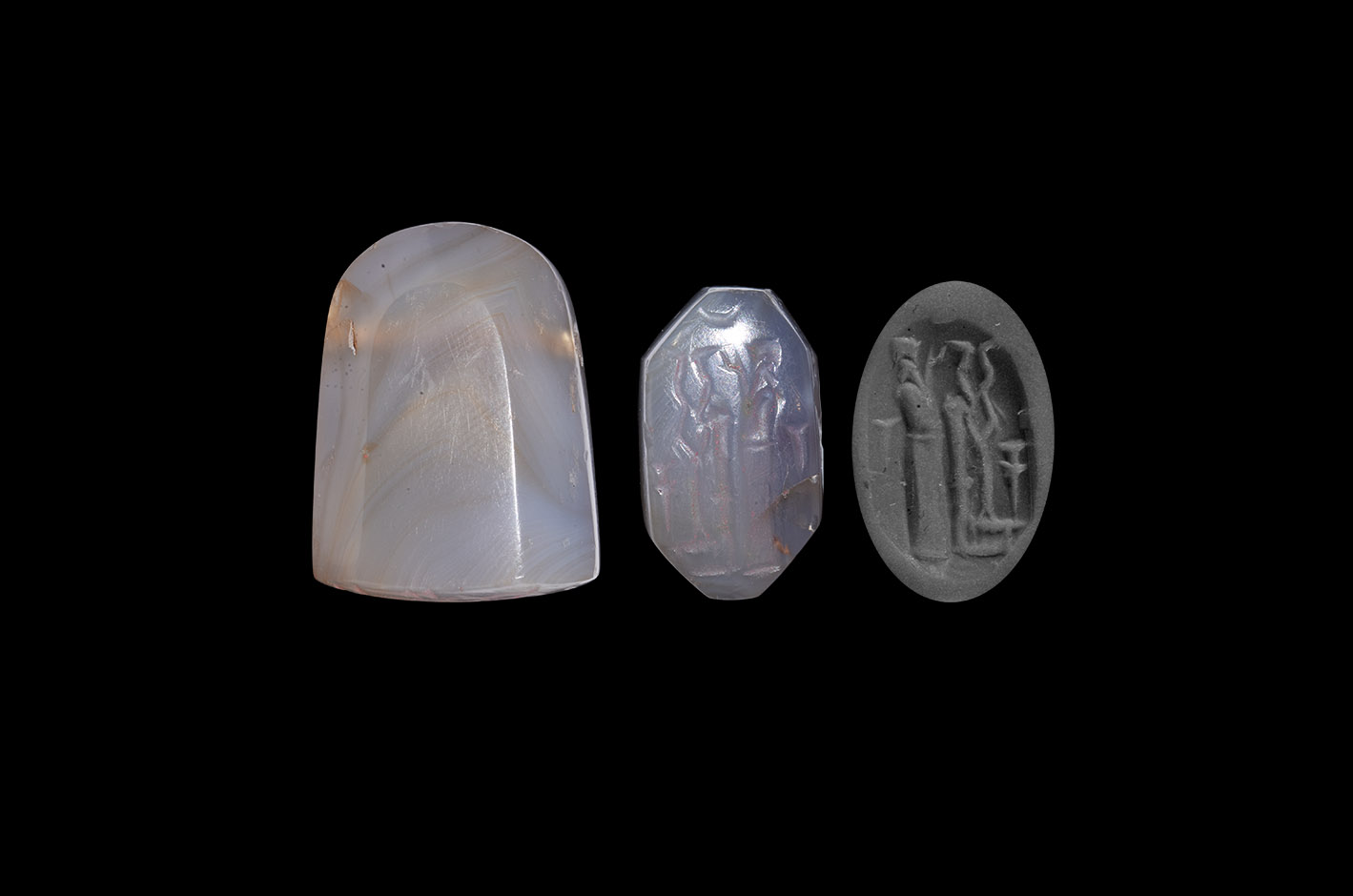
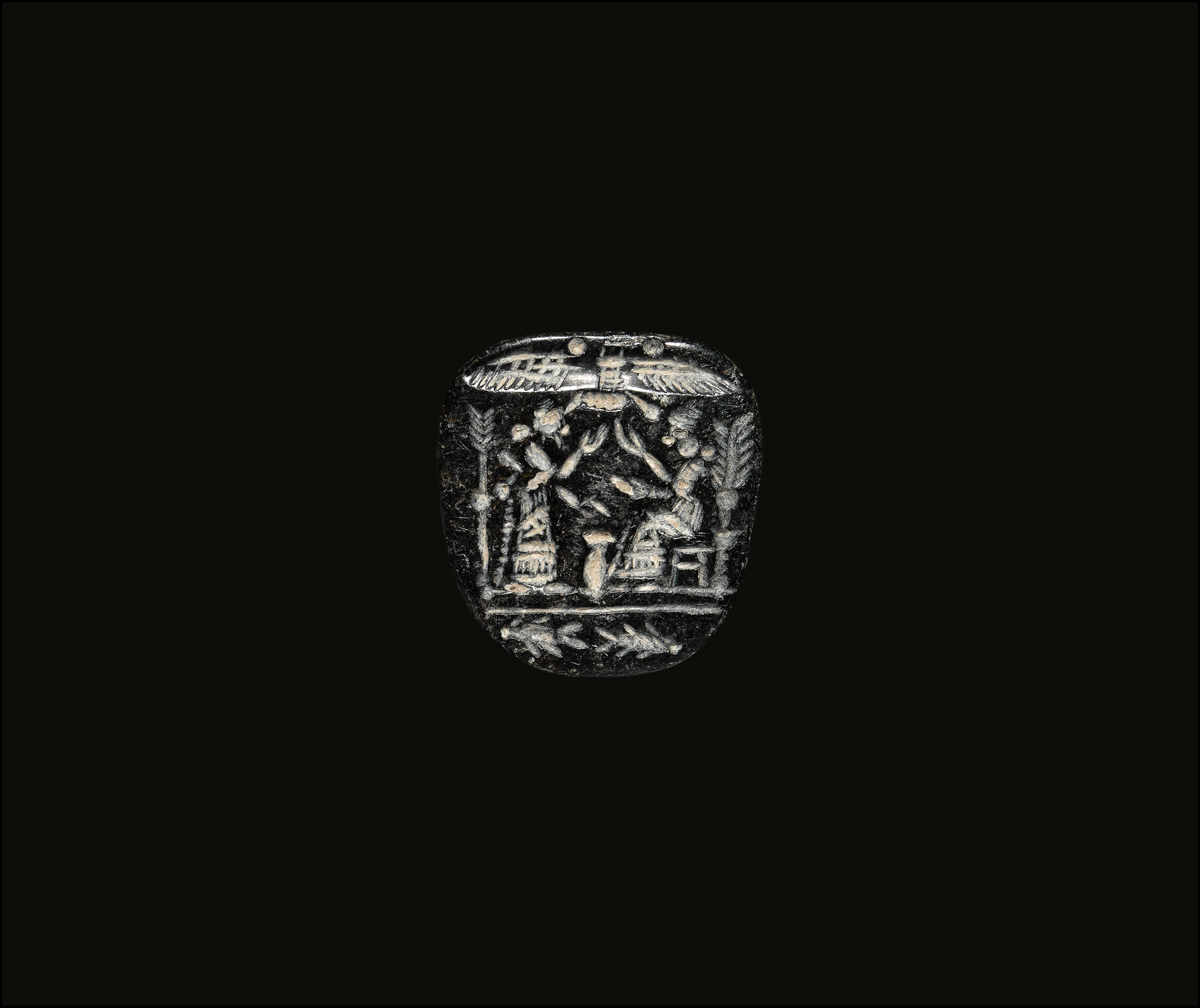
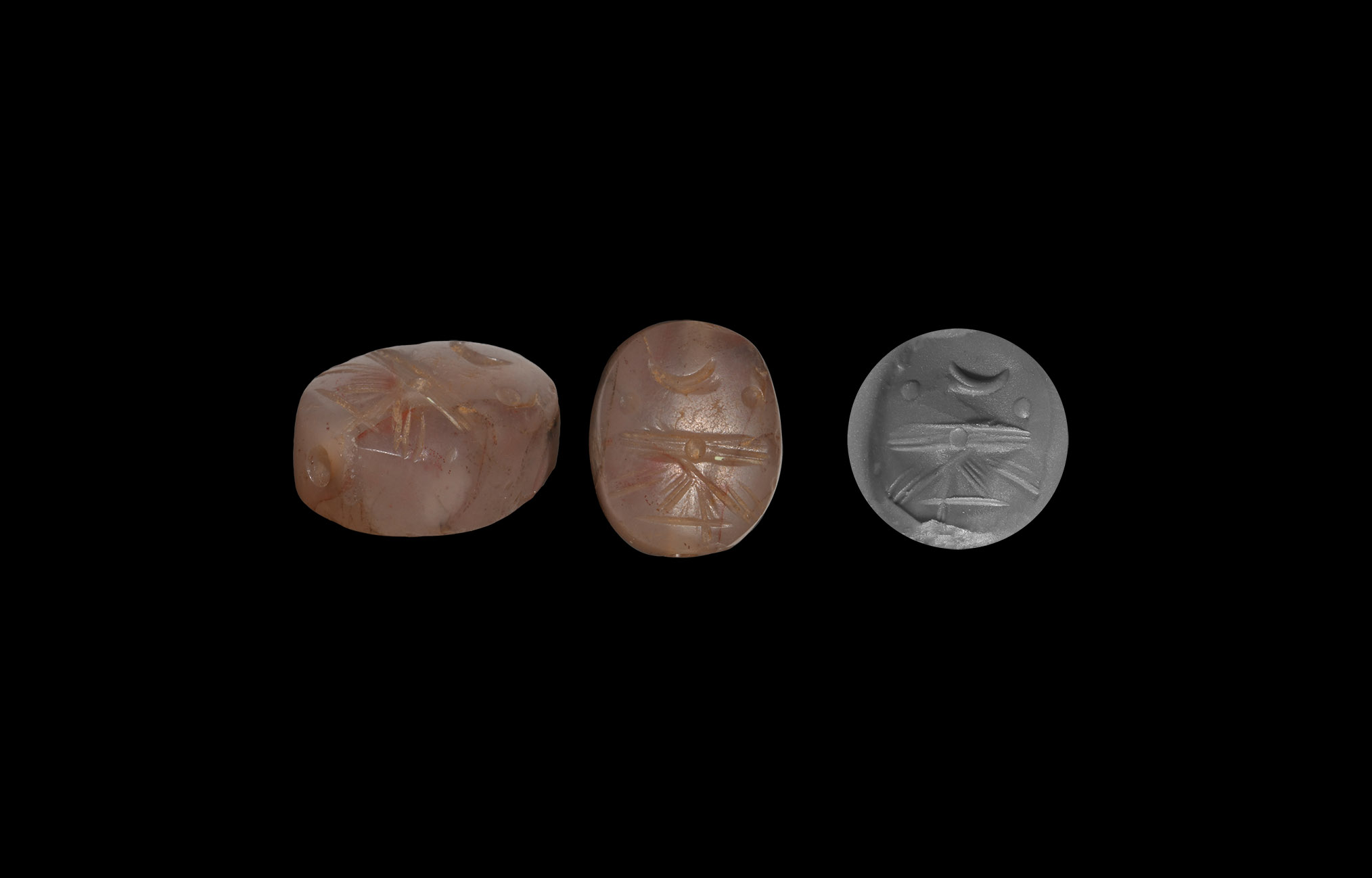
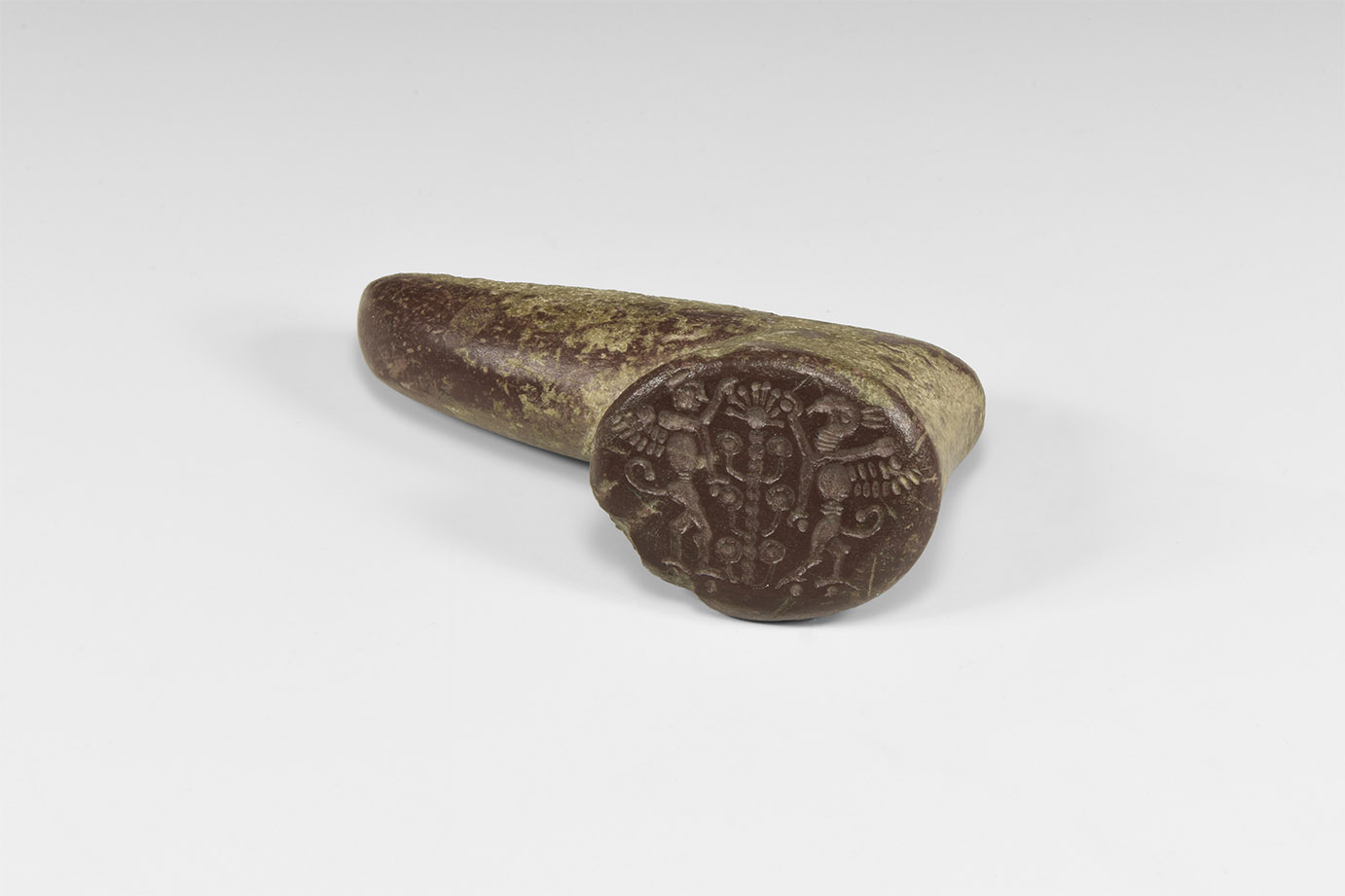


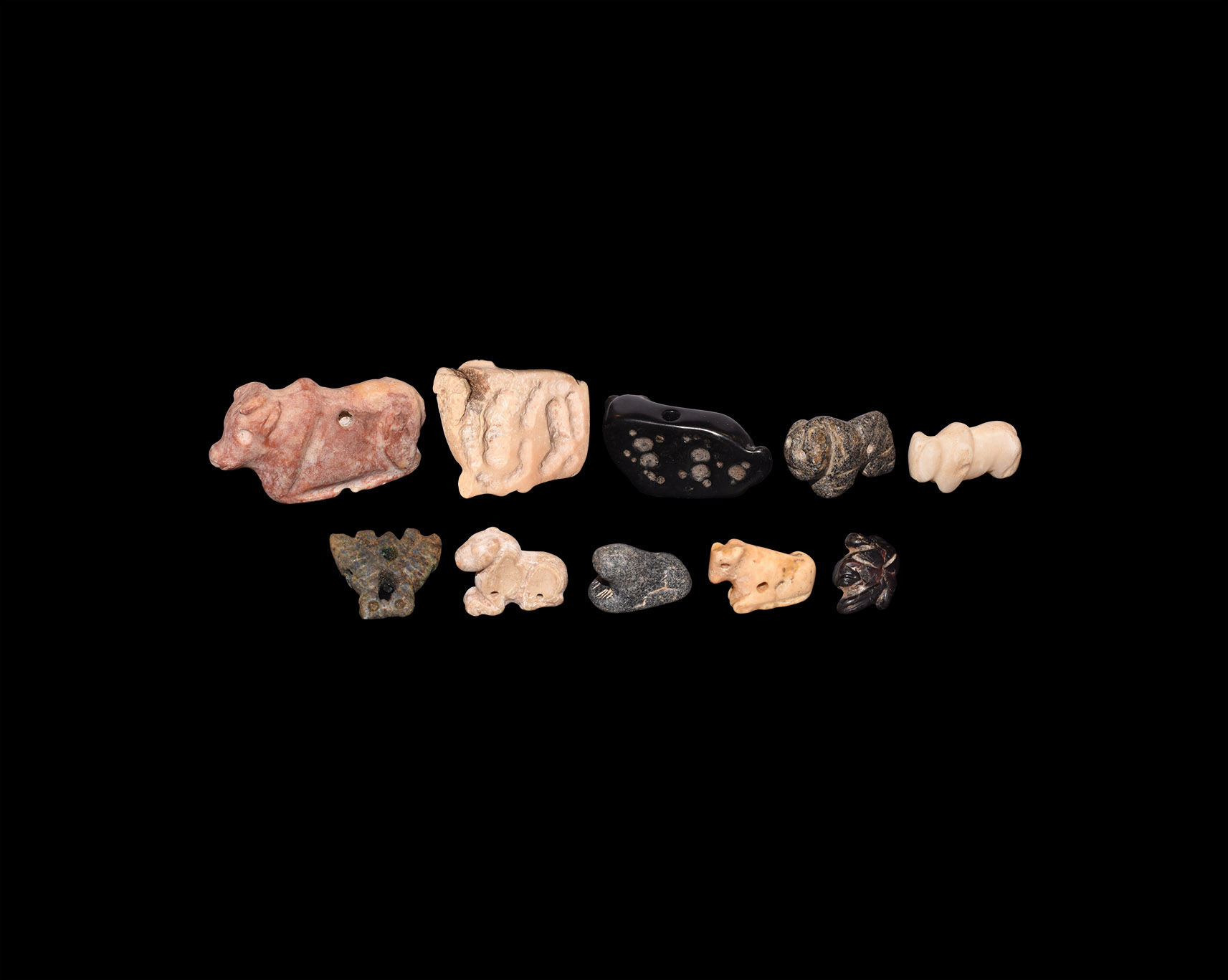
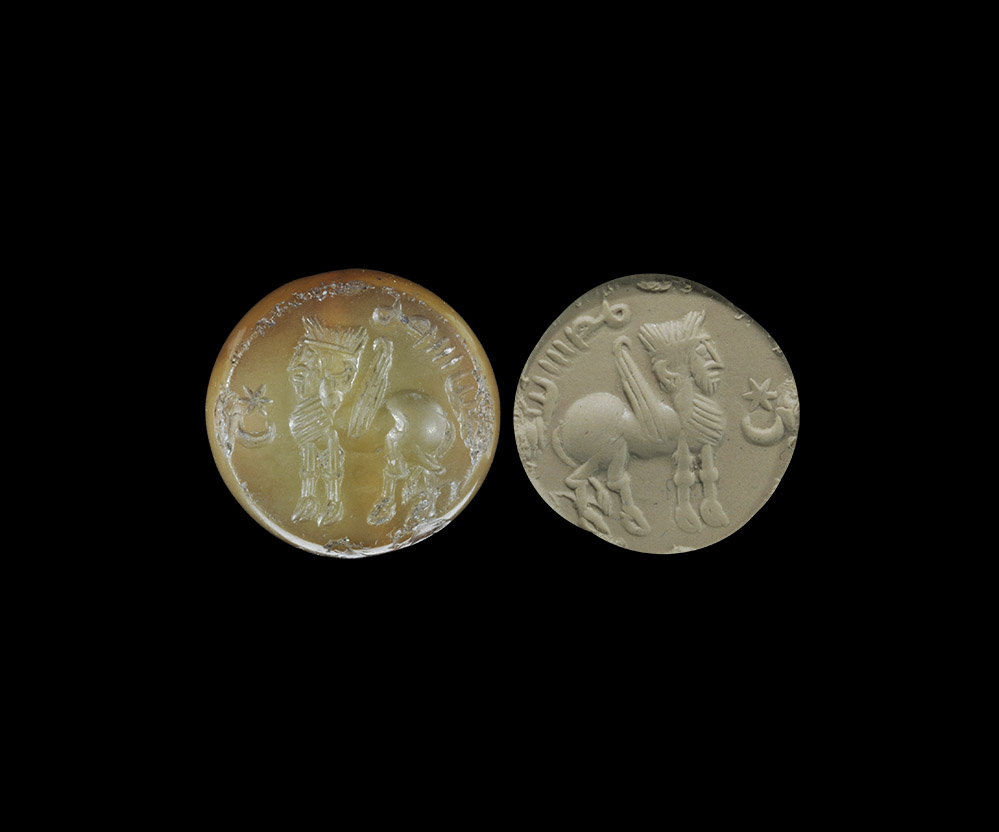

Try LotSearch and its premium features for 7 days - without any costs!
Be notified automatically about new items in upcoming auctions.
Create an alert